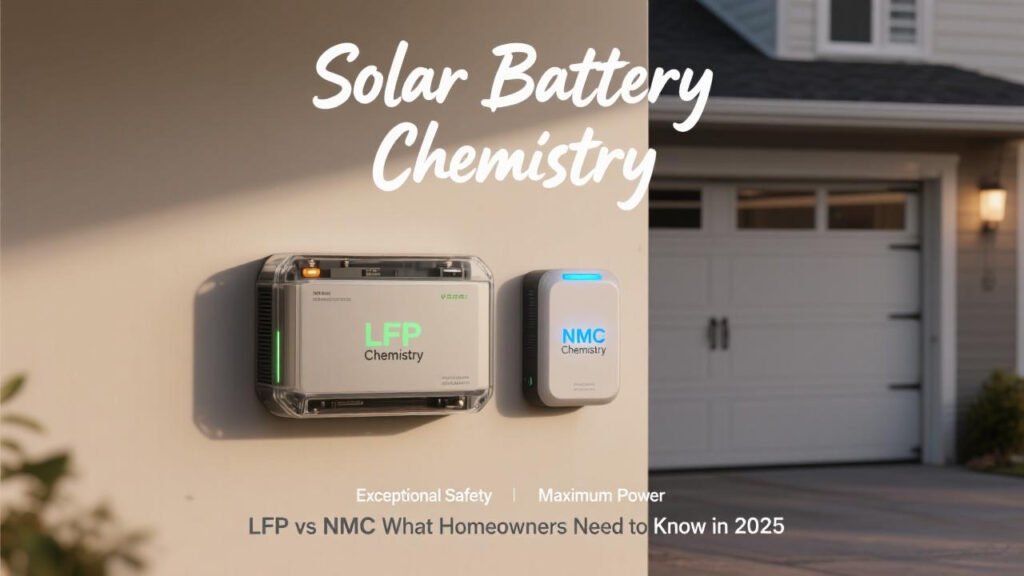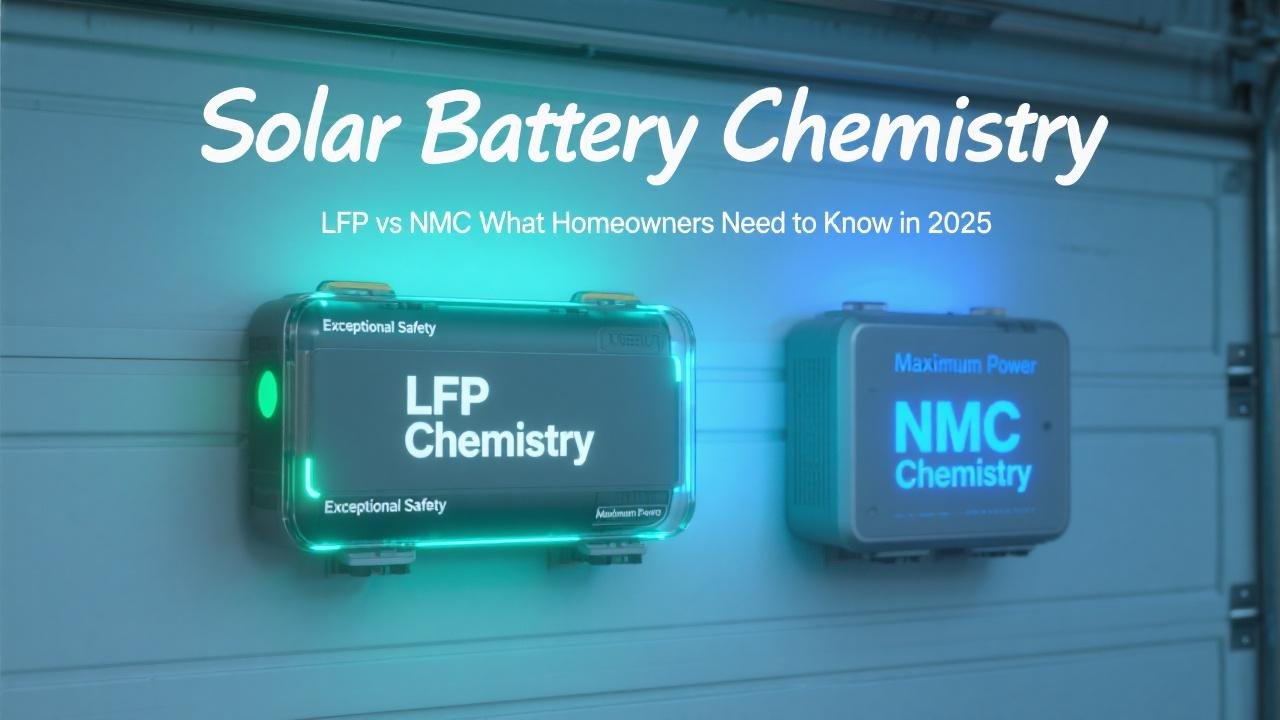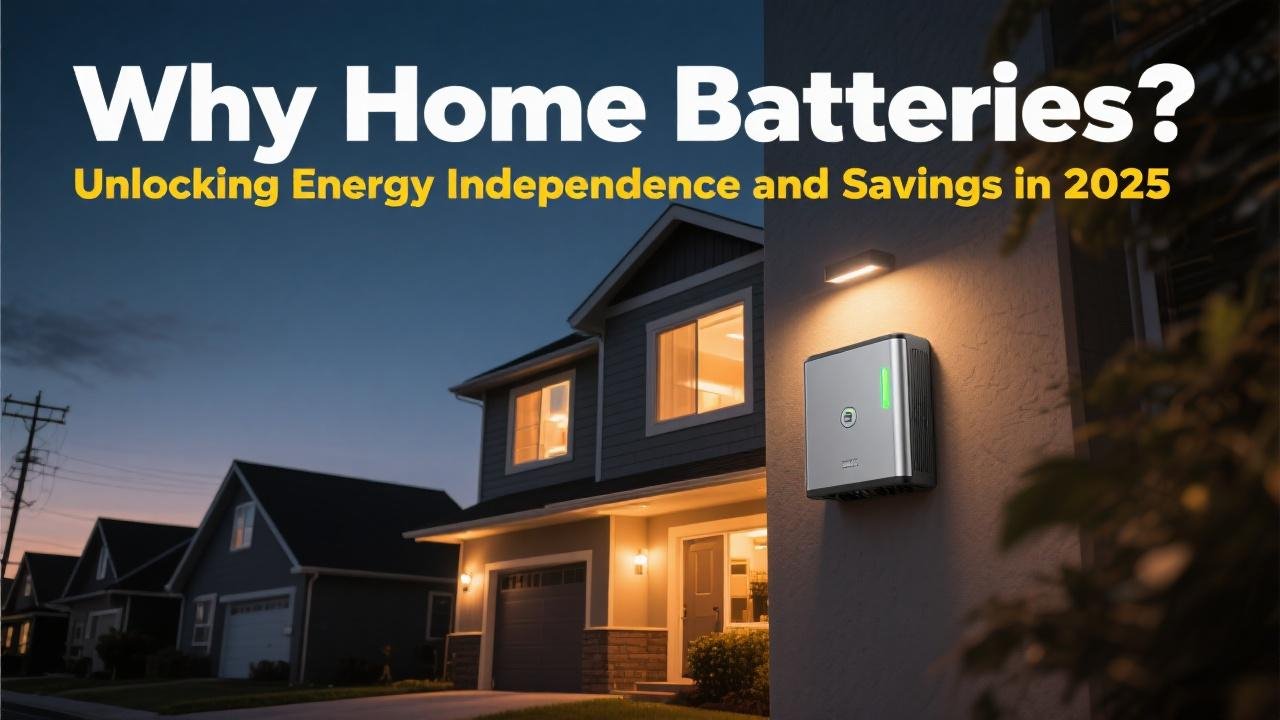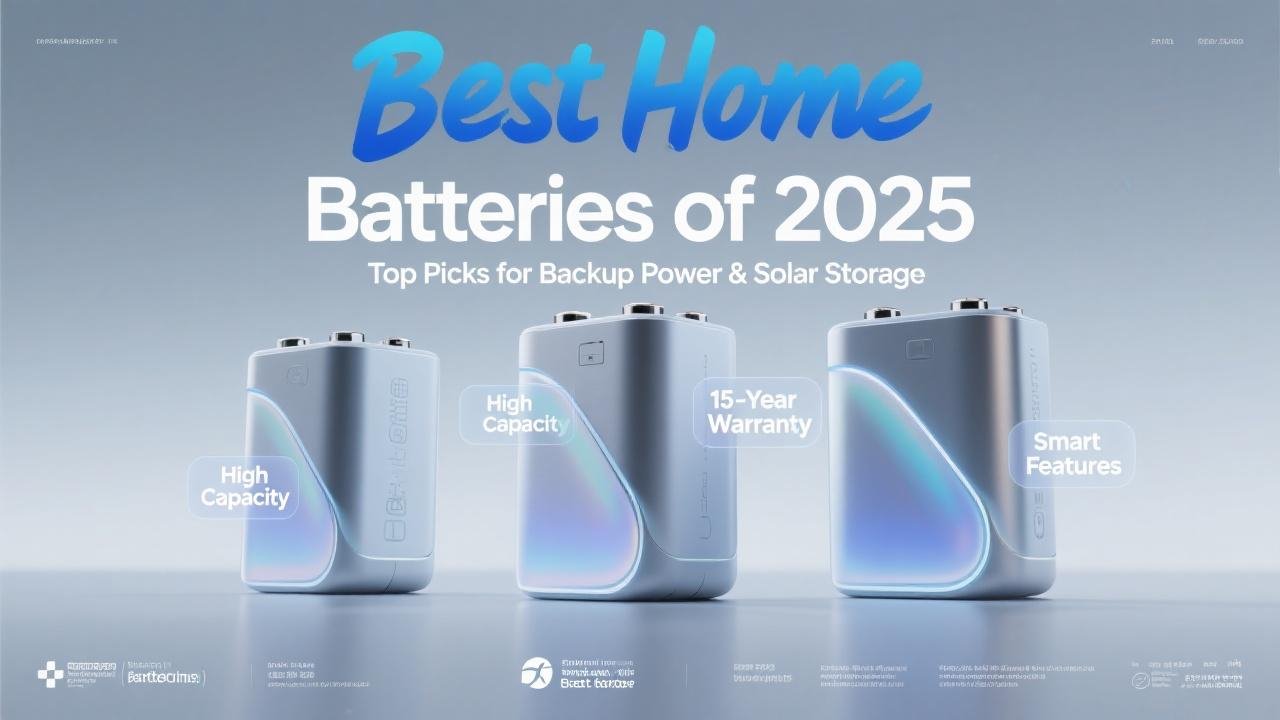Introduction: Decoding the Science Inside Your Home Battery
When choosing a home battery storage system in 2025, you’ll encounter various specifications like capacity (kWh), power output (kW), and warranty terms. However, one crucial factor that significantly impacts a battery’s performance, safety, lifespan, and even cost is its chemistry. The two dominant lithium-ion chemistries for residential solar batteries are Lithium Iron Phosphate (LFP) and Nickel Manganese Cobalt (NMC).
Understanding the fundamental differences between LFP and NMC can empower you to make a more informed decision that aligns with your priorities for safety, longevity, and performance. This guide will break down these chemistries and what they mean for your home energy storage solution. Platforms like EnergySage often provide details on battery chemistry in their equipment specifications, helping you compare options.
Lithium-Ion Batteries: The Common Denominator
Both LFP and NMC are types of lithium-ion batteries. Lithium-ion technology has become the standard for home energy storage (and electric vehicles) due to its high energy density (storing a lot of energy in a relatively small space), long cycle life (ability to be charged and discharged many times), and decreasing costs.
However, the specific materials used for the cathode (the positive electrode) in a lithium-ion battery define its unique characteristics. This is where LFP and NMC diverge.
LFP (Lithium Iron Phosphate – LiFePO₄) Batteries: The Safety-First Champion
- What it is: LFP batteries use lithium iron phosphate as the cathode material.
- Key Characteristics & Pros:
- Enhanced Safety: LFP chemistry is renowned for its exceptional thermal stability. This means LFP batteries are much less prone to “thermal runaway” (overheating that can lead to fire or explosion) compared to other lithium-ion chemistries, including NMC. They can withstand higher temperatures without degrading significantly. This inherent safety is a major selling point for residential applications. The Enphase IQ Battery 5P, for example, utilizes LFP chemistry and is evaluated to UL 9540A for high industry safety standards.
- Longer Cycle Life: LFP batteries typically offer a significantly longer cycle life, meaning they can endure more charge and discharge cycles before their capacity degrades substantially. This translates to a longer operational lifespan for your home battery system.
- Good Durability: They are generally more tolerant of being fully charged or discharged without significant degradation.
- Cobalt-Free: LFP batteries do not contain cobalt, a material whose mining has been associated with ethical and environmental concerns. This makes LFP a more environmentally and socially conscious choice for some consumers.
- Cons:
- Lower Energy Density (Historically): Traditionally, LFP batteries have had a lower energy density than NMC batteries. This means that for the same amount of energy storage, an LFP battery might be slightly larger and heavier. However, advancements are continually narrowing this gap.
- Performance in Extreme Cold: LFP batteries can sometimes experience reduced performance in very cold temperatures, although many modern LFP systems incorporate battery management systems (BMS) to mitigate this.
Examples of LFP Batteries: Enphase IQ Battery 5P

NMC (Nickel Manganese Cobalt – LiNiMnCoO₂) Batteries: The Energy Density Leader
- What it is: NMC batteries use a combination of nickel, manganese, and cobalt for their cathode material. This is a very common chemistry for electric vehicles and many consumer electronics due to its energy density.
- Key Characteristics & Pros:
- Higher Energy Density: NMC batteries generally offer a higher energy density than LFP. This means they can store more energy in a smaller and lighter package, which can be an advantage if space is a constraint.
- Good Power Output: NMC chemistry can typically deliver high power output, suitable for running multiple appliances simultaneously. The Tesla Powerwall 3, often using NMC or similar nickel-based chemistry, boasts an impressive 11.5 kW continuous power output.
- Good Performance in a Range of Temperatures: NMC batteries generally perform well across a broader temperature range compared to LFP, though extreme heat can still accelerate degradation.
- Cons:
- Lower Thermal Stability: NMC batteries have a lower thermal runaway threshold compared to LFP. While modern NMC batteries incorporate sophisticated battery management systems (BMS) and safety features to prevent overheating, the inherent chemistry is less stable at high temperatures.
- Shorter Cycle Life (Typically): Compared to LFP, NMC batteries generally have a shorter cycle life. They may experience more significant capacity degradation after a similar number of charge/discharge cycles.
- Contains Cobalt: The use of cobalt raises environmental and ethical sourcing concerns for some consumers.
- More Sensitive to Charging States: NMC batteries can be more sensitive to being kept at very high or very low states of charge for extended periods, which can impact their lifespan.
Examples of NMC (or similar Nickel-based) Batteries: Tesla Powerwall series often utilizes NMC or NCA (Nickel Cobalt Aluminum Oxide) chemistry.
Which Chemistry is Right for Your Home in 2025?
The “best” battery chemistry depends on your priorities:
- If Safety and Longevity are Paramount: LFP is often the preferred choice. Its superior thermal stability and longer cycle life make it a very robust and durable option for home energy storage, where safety within the home is a primary concern. The trend in 2025 is seeing more manufacturers adopt LFP for residential applications due to these benefits.
- If Maximum Energy in the Smallest Space is Critical: NMC might be considered if space is extremely limited, due to its higher energy density. However, ensure the system has advanced safety features and a robust BMS.
- Environmental and Ethical Concerns: If avoiding cobalt is important to you, LFP is the clear winner.
Key Considerations for Homeowners:
- Battery Management System (BMS): Regardless of chemistry, a sophisticated BMS is crucial. The BMS monitors cell temperature, voltage, and current, protecting the battery from overcharging, over-discharging, and overheating, thereby enhancing both safety and lifespan.
- Manufacturer Reputation and Warranty: Choose batteries from reputable manufacturers who offer clear and comprehensive warranties covering both performance and defects. The warranty terms can sometimes give an indication of the manufacturer’s confidence in the battery’s longevity. For instance, Enphase offers a 15-year warranty on its LFP-based IQ Battery 5P.
- Installation Quality: Proper installation by a certified professional is vital for the safety and performance of any battery system.

How EnergySage Can Help You Decide:
When comparing battery options on the EnergySage Marketplace, you can often find information about the battery chemistry used in different models. If it’s not explicitly listed, don’t hesitate to ask your EnergySage Energy Advisor or the potential installers. They can provide insights into:
- The specific chemistry of the batteries they offer.
- The safety features incorporated into the battery systems.
- The expected lifespan and warranty details related to the chemistry.
An Informed Choice for a Safer, Longer-Lasting Battery
Understanding the fundamental differences between LFP and NMC battery chemistries empowers you to look beyond just capacity and price when selecting a home battery in 2025. For many homeowners, the enhanced safety profile and longer cycle life of LFP batteries make them an increasingly preferred option for residential energy storage. However, NMC technology continues to offer high energy density.
Always discuss battery chemistry and its implications with your solar and storage installer. By considering factors like safety, lifespan, energy density, and environmental impact, alongside information from trusted resources like EnergySage, you can choose a home battery system with the chemistry that best suits your needs and provides reliable, safe power for years to come.



